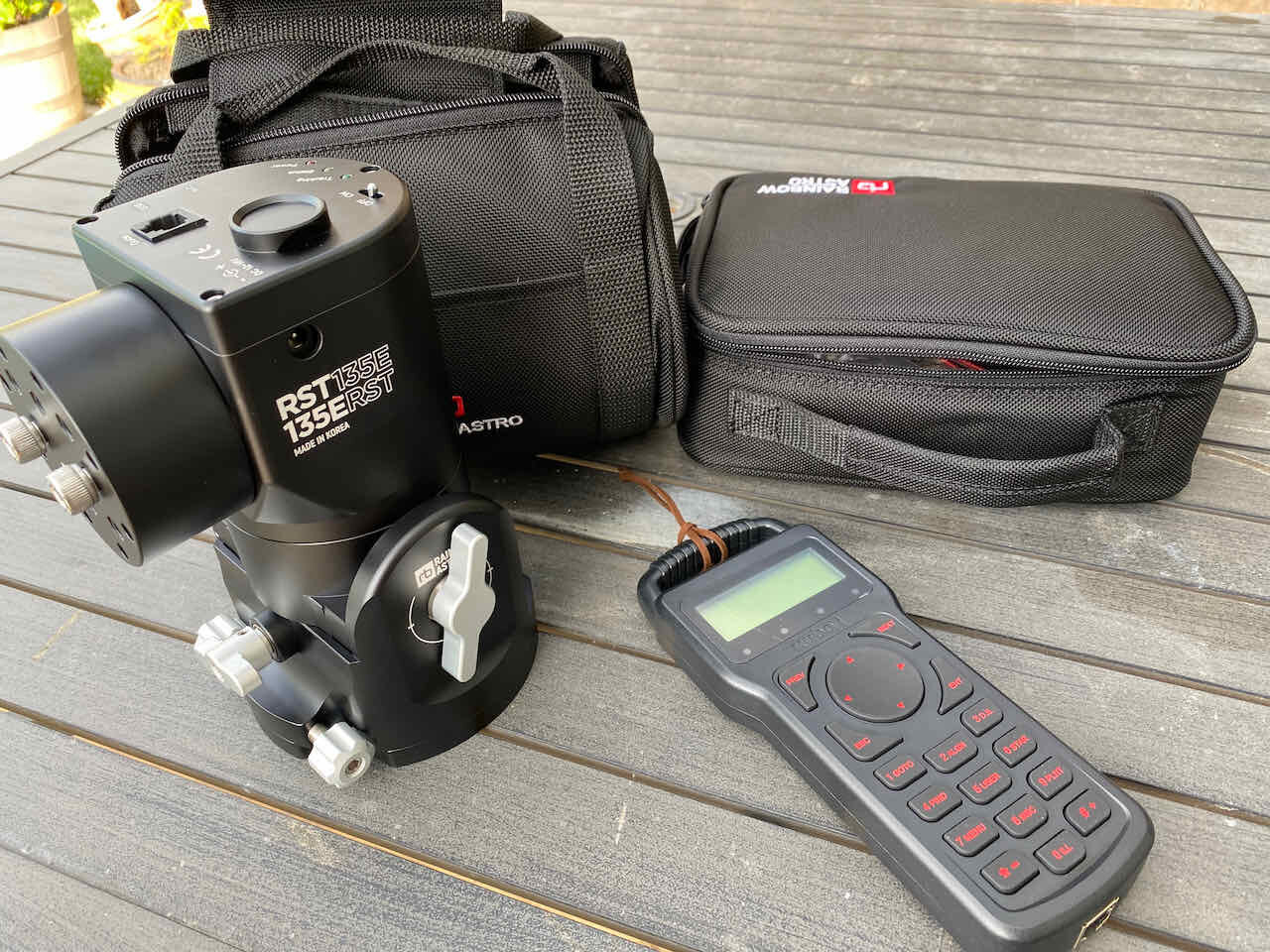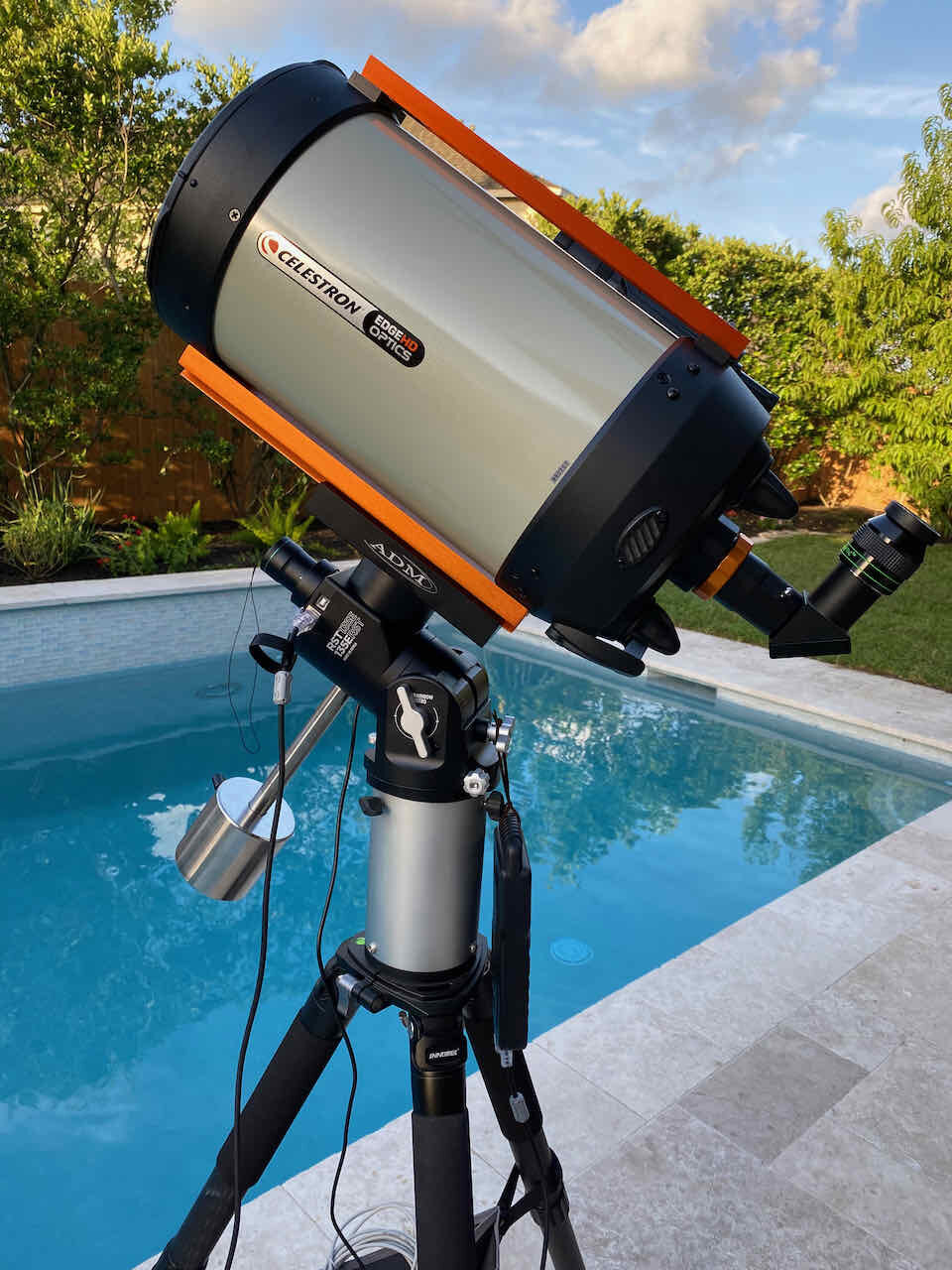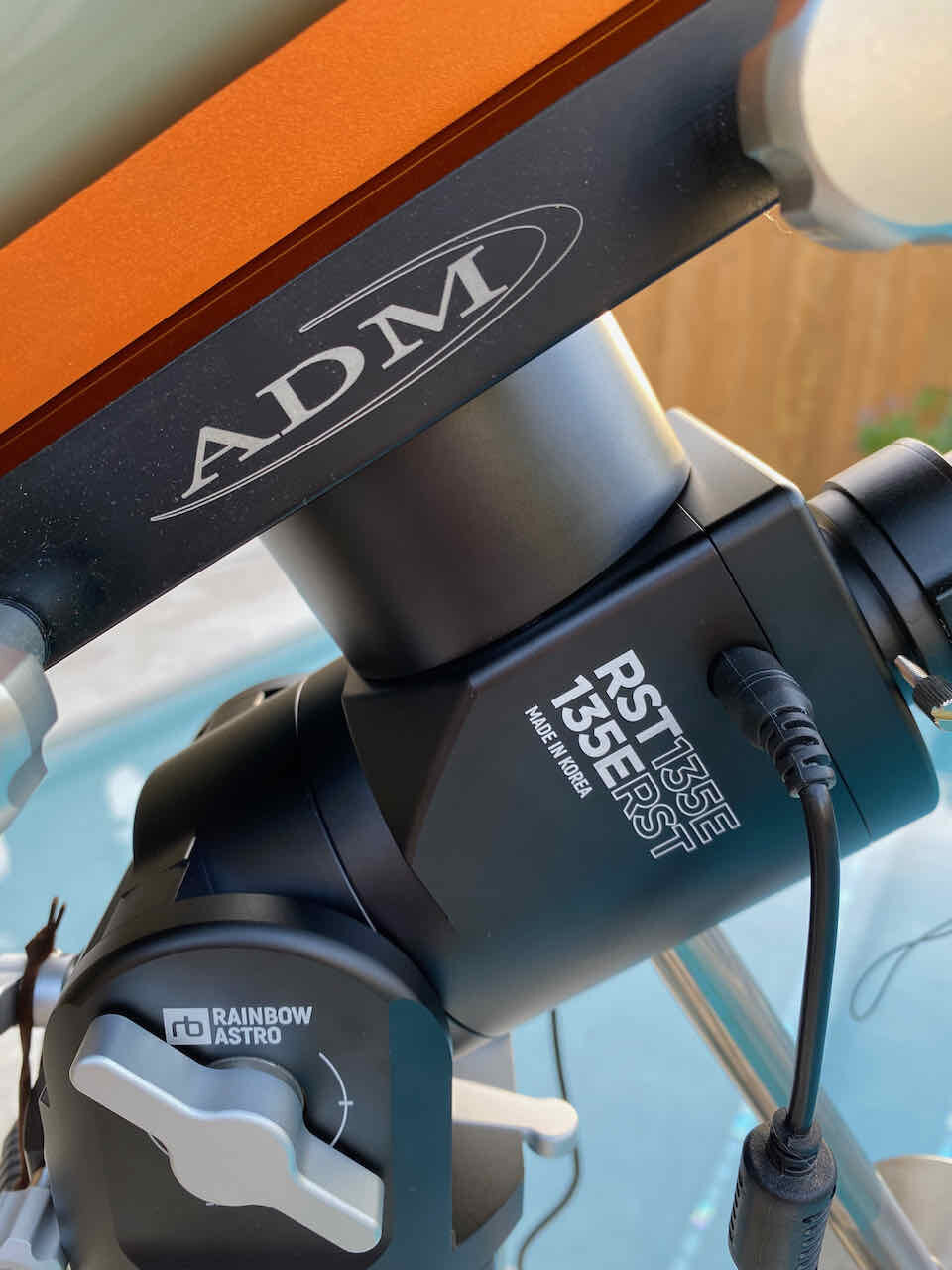M27, the Dumbbell Nebula, shot with the Rainbow Astro RST-135E and Celestron EdgeHD 8” scope.
Astrophotography Portability limitations
This image of the Dumbbell nebula is the culmination of effort into a project I started months ago. My goal was to put together a long focal length highly compact travel rig. I had been using the standard RST-135 mount with a 100mm refractor and my RedCat. But I wanted to image galaxies and small targets with the ease of that setup. However the +/- 30 periodic error of the mount made it difficult to guide longer focal length scopes fast enough to correct for the error. Trying to use an OAG with .5s guide exposures means very little signal on stars, and the guide rate has to be high on this mount to overcome the PE.
The Rainbow Astro RST-135 and SkyWatcher Esprit 100.
A new mount, with new possibilities
Queue Rainbow Astro introducing a new mount, the RST-135E. The same technology and mount as the original, but this version has incremental Renishaw encoders to help correct the massive PE. While this new mount was introduced as a way to image short focal length telescopes without guiding, it did open up a new possibility. The new mount has +/- 2.5 PE over the course of a cycle. With the lower PE I could consider a longer focal length telescope like the 8" EdgeHD and guide out any remaining tracking issues introduced by a long focal length scope. Of course, to prep it for imaging, I had to also invest in some accessories to get the whole kit up and running. Thankfully I had a ZWO ASI294MM-Pro with filter wheel and Astrodon filters sitting unused. The camera and telescope combination means the resulting pixel scale of the new system is .67". So the new mount needs to be able to guide with better RMS error than .67. A tall order for this new mount. But experiments with the standard RST-135 were starting to net .3 RMS on some setups at the .5s guide rate. I need to achieve .67 or better at 1442mm focal length with 2-3s guide pulses in order to see stars and avoid the effects of any poor mount tracking with this system.





I've had the equipment sitting around for more than a month now, with not a single clear night until last night. Rain and clouds have plagued us in the south, as we're trapped in some kind of alternate climate universe for summer. So I was extremely excited to get a clear night, and didn't put a lot of time into the image itself at only 5 hours total integration time. A lot of the early night was spent experimenting with tuning focus parameters and guiding.
The first night of data collected with the new setup. 5 hours total.
Seeing was poor after all the rain and humidity we’ve been experiencing, and on top of that sand storms from the Middle East have drifted into the Gulf of Mexico reducing our air quality. RMS during poor seeing on this first image was .64 total RMS. That RMS error was just below my requirement of .67. Promising results that I hope to improve as I learn more about the mount. The resulting field of view is slightly smaller than my EdgeHD 11/ASI6200 setup, and is now making me question whether or not I need to keep that rig along with my 10Micron mount. I've been using my Rainbow mounts a lot. I can carry the whole setup outside without disassembling anything. It stays put together in my office during down time. Not only that, but they can be fun to travel with. The 10M setup, while billed a portable rig, requires hauling lots of heavy pieces outside one at a time and assembling them. It's still the best mount I've ever used, but the convenience of the light weight stuff is so nice.
Overall guiding is fairly stable, though there are some excursions with DEC occasionally, and I have an e-mail out to Rainbow Astro to see what this might be. (Update: see note at the end of the article where Rainbow Astro addressed the issue.)
Then, we were blessed with a second clear night, and I was able to add another 80 5 minute subs to the above image and get a new result. This time I processed the image knowing how much signal was in the OIII images. I increased the contrast in OIII so that it wouldn’t completely blot out the HA signal lying underneath with lots of interesting detail.
I’m very happy with these results, and hope to learn more over the coming months about this new mount and it’s characteristics. With any luck, I’ll be able to improve the guiding further to leave less room for error.
My final image of the Dumbbell nebula with a total of 11 hours 40 minutes exposure time.
Here’s a rundown of the gear used for this image and my final mount and scope setup:
UPDATE: Rainbow Astro released a firmware update due to a bug on the DEC tracking axis, which led to random DEC excursions. With this fixed, I now consistently get .3-.5 RMS guiding with this setup.



























